A good night’s sleep, and back into the streets early… perhaps too early. I don’t really sleep that much – generally I go to bed at 2 in the morning and wake up between 7 and 8. Henry makes fun of me because what I call “sleeping in” is when I get up at 8:15 or 8:30. And not being at home I didn’t have things to putter around doing, so after a coffee, I was out in the streets.
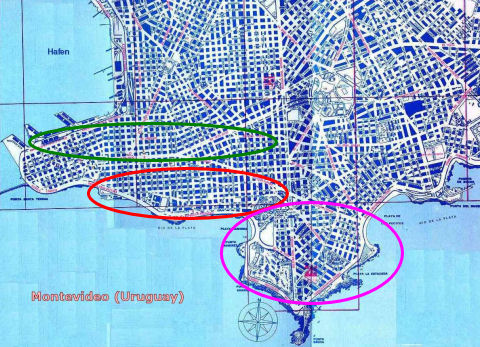
I had planned the morning around the Mercado del Puerto, the port market, which isn’t really so much of a market anymore, or at all, because it’s now 100% restaurants and bars. So the photos are going to be a bit out of order, as what I did was headed pretty much straight there, other than a few photos on the way, and then made forays in and out of it, as I explored the surrounding area – basically the west half of the green circled area above. But that got me in to see things being setup, bit by bit, until around 11:30 a.m. when the restaurants really start to open. Initially I was going to do that all in one post, but realized that the Mercado had enough photos and things of interest, to me anyway, to justify its own post. So, first, the rest of the morning in the Ciudad Vieja zone.
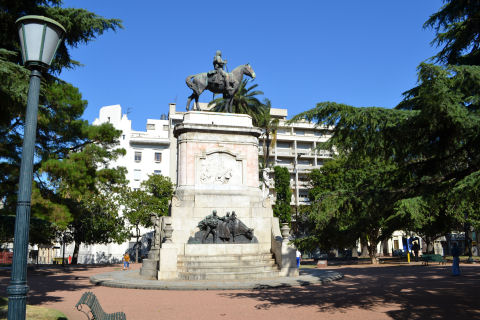
The pretty little Plaza Zabala, named after Bruno Mauricio de Zabala, one of the founders of the city of Montevideo in 1726. Originally a colonial governor posted there by the Spanish, with the war of independence he switched sides, and the city was founded as a bastion against advancing forces from Portugal via Brazil.
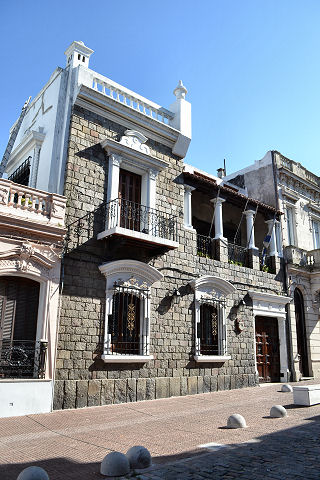
Some sort of Naval officers’ club or organization, I just liked the building.
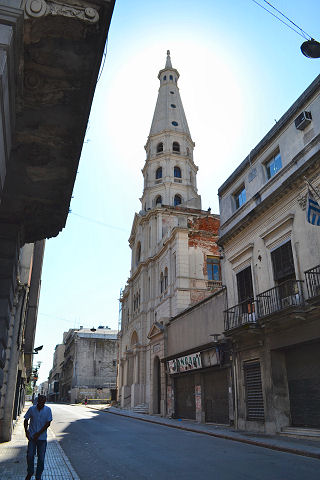
The San Francisco church, apparently quite a historic landmark, but, closed for renovation.
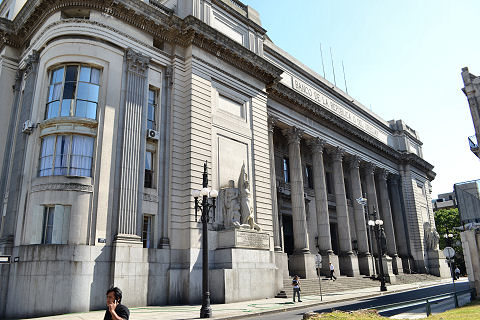
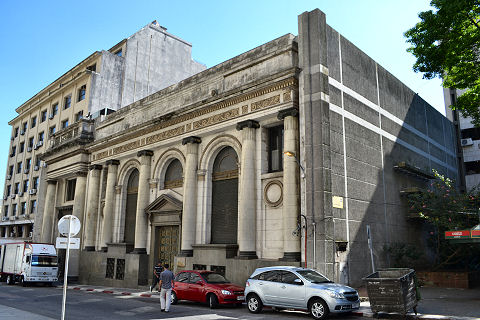
The main Banco de la Republica branch and its neighboring older building – perhaps the original location?
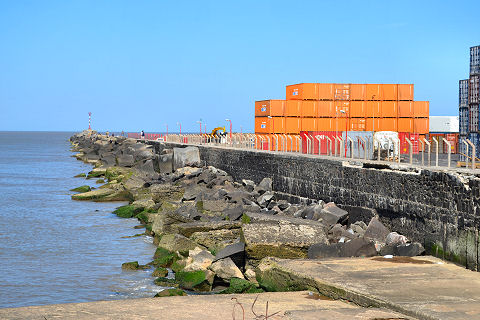
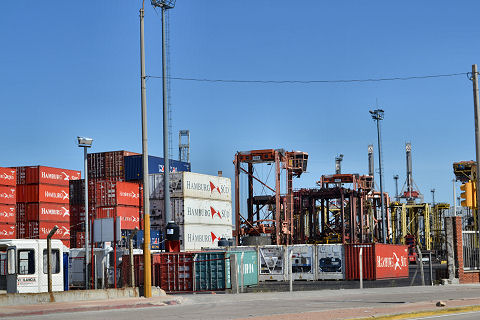
I wandered out to the western point, where the commercial freight docks and shipping yards are.
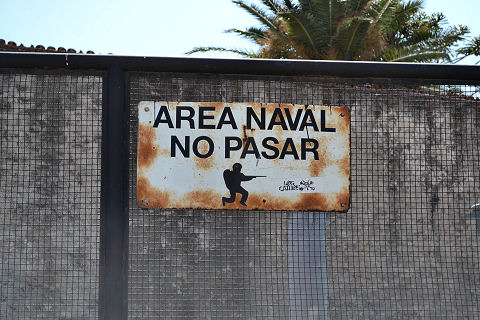
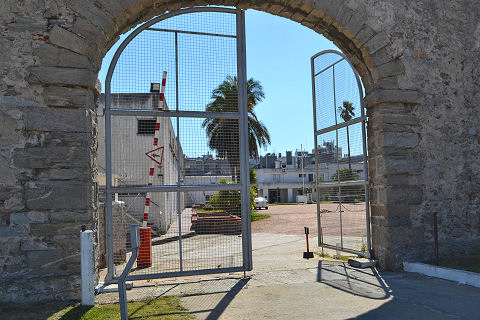
Also where the naval yards are located.
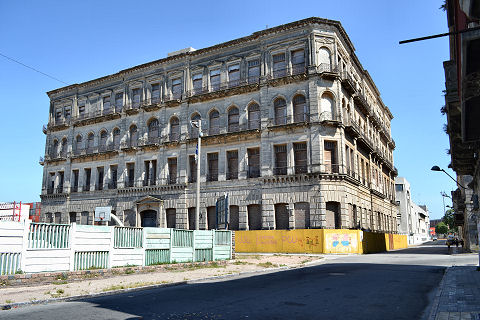
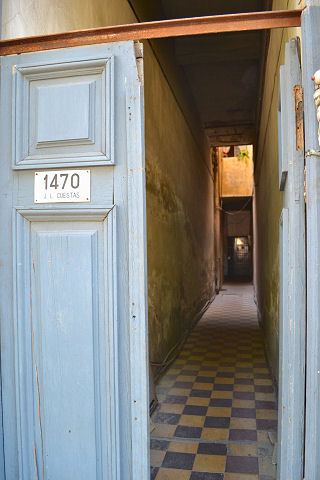
Definitely the “old city” – and some of the most rundown parts of Montevideo I’ve seen, not that I’ve seen it all, by any stretch.
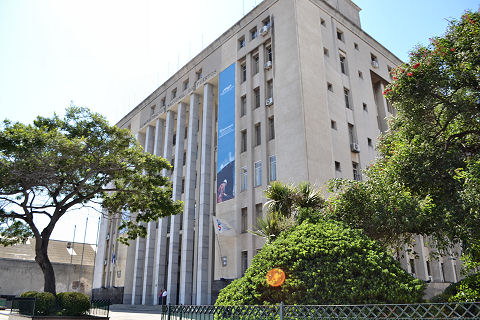
The port administration building.
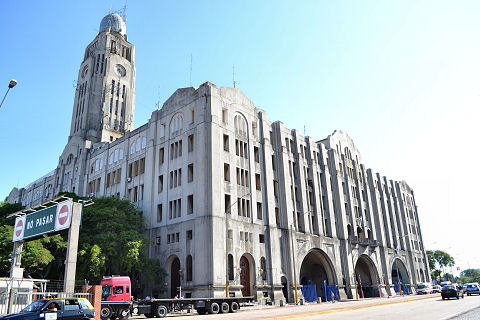
The Customs “house”.
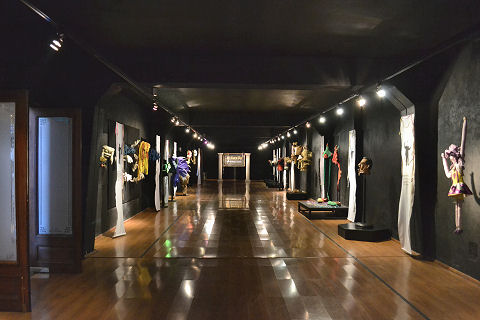
The Carnaval museum was actually quite interesting, covering the history of the traditions, particular to Uruguay, and showcasing costumes, masks, musical instruments, etc.
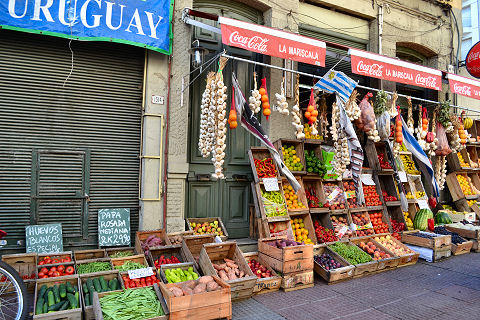
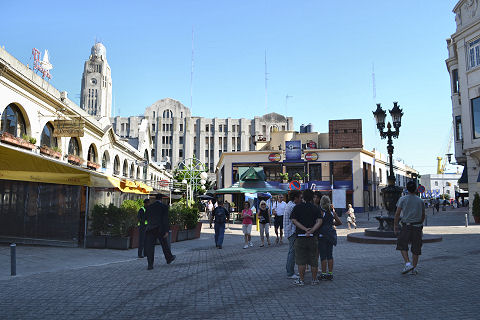
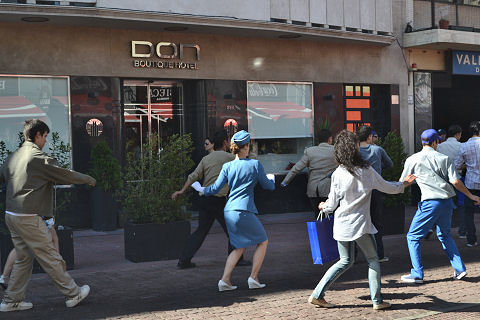
Headed for the Mercado, the street vendors are out in force around the market area, selling everything from fruits and vegetables to souvenirs. I also encountered a major setup filming a commercial of some sort – I ran into them twice more during the afternoon in other parts of the Ciurdad Vieja – there’s a woman in business dress carrying a briefcase, followed by several dozen people each in a different sort of work uniform, all dancing behind her while she walks. Don’t know what the commercial is for, but I assume we’ll be seeing one of these days – or maybe just the folk in Uruguay will be.
Next up, the Mercado del Puerto….
Wow, Dan. Except for that dreadful experience at the sushi place, your trip looks like a lot of fun. Of course, the place doesn’t look like BA, but is the feel totally different than in Argentina? Do they speak Spanish with a different inflection? Is the dollar to peso ratio different?
Seems like a pretty city. Your photos are great. Nikon does it well. How far is where you are from the wine country? Are Uruguay’s wines decent? Up and coming?
Yeah, overall it was a great trip, and more to come. Really, the only negatives were the sushi place and some sunburn, the latter of which was far less painful. Montevideo’s definitely a smaller city than Buenos Aires, and the country as a whole significantly smaller than Argentina – all of Uruguay could fit in just Buenos Aires province and has a population roughly the same as the city of BA proper, a bit over 3 million, over half of whom live in Montevideo. It’s a wealthier country overall, far less poverty in evidence, and it’s more expensive – it has a strong economy – it’s the only country in the Americas that hasn’t gone into a recession in these last few years. The “uruguayo” as the peso is referred to in slang is running about 19 or 20 to the dollar, so it makes prices look high, and indeed, prices are about 30% higher than in Argentina. The accent, vocabulary, and dialect of Spanish is pretty much the same as Argentina – some vocabulary is different and there’s more of an influence from Brazilian Portuguese in that and accent at times. Wine country is spread around, but, there’s a bit of a concentration of wineries in the area north of the city ranging from 30 minutes away to about 2 hours away – I wrote up the ones I visited way back in a series of posts that start here. And, about five years ago wrote an article for Wine Business Monthly on the Uruguayan wine scene, and I think it’s just gotten better.